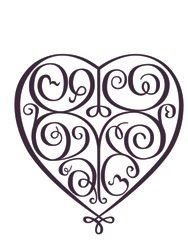



 In 1966,Patrick Swift and David Wright made three trips to the northern part of Portugal which includes the Minho province. Together they wrote this book of which I can say is a treasure as far as travelling journals go. It is a journey through an almost unspoilt northern Portugal and their journey for their search of Lusitania in the form of Iron Age sculptures and Celtic hill-forts. For David Wright it also included the search for the perfect vinho verde!
In 1966,Patrick Swift and David Wright made three trips to the northern part of Portugal which includes the Minho province. Together they wrote this book of which I can say is a treasure as far as travelling journals go. It is a journey through an almost unspoilt northern Portugal and their journey for their search of Lusitania in the form of Iron Age sculptures and Celtic hill-forts. For David Wright it also included the search for the perfect vinho verde! Este livro dos autores, um deles um famoso artista irlandês que há 40 anos fundou e revitalizou com o Lima de Freitas a olaria Algarvia com a abertura de a casa de Porches Pottery (ainda hoje gerido pelas filhas do Patrick Swift), e o outro um famoso poeta, contam-nos de um Minho que os encantou. Com desenhos e estórias eles descrevem um povo com uma alma forte e uma terra que naquela altura ainda era parecida com aquela que quando os Romanos a viram há dois mil anos pensavam que tinho chegado aos Campos Elísios.
Pedra Furada
Nesta passagem os autores encontram a Pedra Furada (nome de uma terra e uma pedra pre- histórica) entre Rates e Barcelos na N.306 e encontram ou são encontrados por uma família camponesa.
Se gostam do Minho, esta é uma passagem do livro que realmente vale a pena ler.
...«"Well have a drop, uma pinguinha, to try," said he. The women vanished and the pinguinha was brought in the shape of a huge blue striped earthen jug full of a very dark ruby-red liquid which was slightly frothy at the rim and stained the very glaze of the jug itself. The women produced glasses-fine glasses, which was odd, because we have noticed that the country folk drink out of pottery bowls in the tabernas. After another whispered conversation between the women the old man asked us if we knew what broa was (it is the local home baked maize bread). Again the ladies vanished. When they came back they brought a vast cake of bread, a spotless white table cloth, napkins, and a knife. The cloth was laid meticulously on the old wall and the bread was cut and set out and the glasses filled. There we stood about the stone and drank and broke the sodden rich-flavoured bread. Only the visitors ate, neither the old man, the young fellows nor the women would join us. It seemed to be ritualistic, almost, that the visitors should eat and drink while the rest watched with approval-the young ones with some amusement. It was superb fare. The wine dark and filling the mouth with a scented taste of all the dim adegas one had ever entered, and the bread seeming to contain the whole of the countryside in its slightly sour earthy aroma. The talk turned, as it must do, on emigration. The young man had come back from France. He was glad to be home. But what they wanted to know was simply: where is the best place in the world to earn money now? From the way they spoke one knew that they would quite unconcernedly set off there, whether it was China or Peru. While we talked and ate the heavy bread a young man came over from the big house-he was a fresh complexioned red-headed youth, a student who was going on for the priesthood. He politely inquired from the old man and his family if he could interpret for them, joined us for a moment and then went into the church where he began to play the organ. Standing there, with our bread and wine, grouped about the Pedra Furada, listening to organ music sifting through the open door of the chapel while the late afternoon sun filtered through the autumnal leaves, was one of the strangest and most moving experiences of our travels through the Minho. » **


8 comentários:
Bom dia Minhotinha!
Assim é que é, exaltar o que é nosso. As imagens são verdadeiros documentos históricos, sobre o texto não me pronuncio, o meu "english" não chega para tanto.
Parabéns, especialmente por este documento.
Beijo
Bom, as imagens são raras, não só pelo aspecto mas principalmente por nos levarem a um tempo já meio esquecido... mas o texto! Acredita que sinto o cheiro do vinho, a textura do pano branco sobre um muro tosco (com cimento, pedra e musgo velhos), o sol a bater na cara e órgão a tocar... meu deus, que imagem!
Bravo Mary! É um post magnífico. Quero ir "lá acima" há já algum tempo. Uma grande amiga minha é de Barcelos, e sempre que me falas do Minho lembras-me dela. Thank you.
:)**
:)****
Mary
ENGLISH!
WOOHOO!
A Porches pottery ainda existe ?
I think so!
http://www.algarverealty.com/towns/Porches/Porches.html
bj
Mary
Deliciosas imagens, e imagino o rico conteúdo do livro.
Não conhecia esse livro.
Só o meu mano para descobrir preciosidades dessas.
Beijo minha anjinha
SP
Gostei de ter visto a foto de minha tia-avó Rosa Ramalho, que era essa personagem fascinante da olaria tradicional portuguesa. Abraços desde o Brasil.
Enviar um comentário